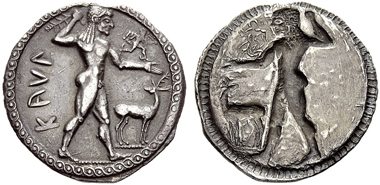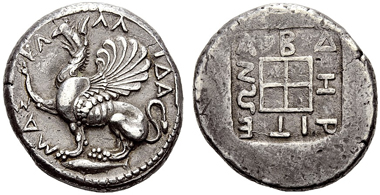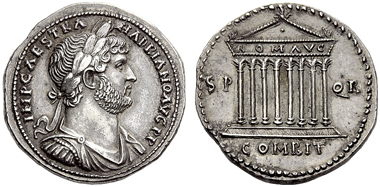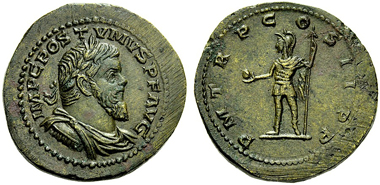17-11-2013 – 01-01-1970
The JDL collection
The JDL collection: “An exclusive quest for Beauty”
“You know as well as I do that it’s often a question of chance encounters. Someone leads you to something you weren’t really looking for – a new discovery that turns out to be fun …” tells the collector JDL in an interview. Indeed, it is during an encounter in 1977, with Michel-Max Bendenoun from Tradart, that JDL becomes fascinated by the coins of the Greco-Roman Antiquity and decides to collect them. With Michel-Max Bendenoun’s assistance and advice, he then continued to make acquisitions every year with great regularity. JDL entrusted him with his purchase orders in the international public auctions that the collector occasionally attended in person.
JDL’s well-balanced choices focused primarily on gold and silver Greek coins and bronze coins from the Roman Empire. Over the years, through regular, well thought out and carefully chosen purchases, JDL’s collection came to encompass a thousand years of history and a geographical area extending from Greater Greece to Persia and from the Danube to North Africa. Professor François de Callataÿ, who kindly agreed to write the preface for the work dedicated to the JDL collection, perfectly identified the direction the collector had decided to take: “There is a manifest desire to cover this world by bringing together a representative series of these miniature masterpieces” he wrote, “as well as a passion for history.”
A passion for history, most certainly! The JDL collection brings together splendid numismatic specimens which evoke both the birth of coinage in the seventh century BC and the main stages in its evolution and spread throughout the entire Mediterranean basin and to the Middle East. The major denominations of the Greco-Roman monetary systems are also represented, rounded out by new issues minted at the time of various monetary reforms. The JDL collection affords us the great pleasure of discovering the history of the art of Antiquity through a series of monetary masterpieces whose state of preservation, composition and breath-taking beauty are truly outstanding.
“Care to admire, for example, this excellent sesterce bearing an idealised effigy of Caesar Augustus” says Michel-Max Bendenoun, “it combines the realist tradition with the canons of classical art inspired by Polycleitus. Then, there is also the genius of the talented master engraver who, by judiciously positioning a small Victory behind Caesar Augustus’ head to crown him with laurel, succeeded in presenting us with an awe-inspiring and monumental portrait of the Emperor”.
More fundamentally, however, it was perhaps the historical figures and the places laden with history that guided the collector who took great pleasure in visualising the great names of history as inscribed in the books of his youth: Croesus, Mithridates, Vespasian … or Athens, Persepolis, Jerusalem …
Lot 278: ITALY, BRUTTIUM, CAULONIA, Nomos c. 525-500 BC, AR.
“An exclusive quest for beauty” says Professor de Calatay in his preface. “It is clear that the coins were primarily selected by JDL for their sheer artistic quality”, emphasizes Arturo Russo in his foreword to the catalogue of the public aution, and he ads: “There are so many extraordinary coins in the collection that we have decided to divide it into two parts. In this first part every coin deserves a special mention without exception, here are but a few of the many highlights: Firstly, the Caulonia nomos (lot 278), a coin of sublime style and in our opinion the best executed die of the entire series. Moving on to Italy, we must look at the spectacular decadrachm of Syracuse signed by Euainetos (lot 281), one of the best specimens in the world of this veritable monument of Greek art.”
Lot 283: NORTHERN GREECE, THRACE, ABDERA. Tetradrachm c. 473/70-449/8 BC, AR.
“In central Greece gems can be found such as the remarkable tetradrachm of Abdera (lot 283), a duplicate of the Museum of Fine Arts Boston; a gold stater of Lysimachus (lot 284) which is not only a coin of exceptional quality but also bears a portrait of spectacular style; this is followed by the magnificent archaic tetradrachm of Athens (lot 287). In Asia, we cannot fail to mention the tetradrachm of Mithridates VI (lot 289), an absolutely perfect coin of sublime style and certainly the best specimen known. The same can be said of the Tarsus stater (lot 293) which wonderfully marries extraordinary quality with delightful die artistry. Finally, we must include the exceedingly rare tetradrachm of Seleucus I Nicator (lot 294). Turning to the Roman coins, some true masterpieces can also be found here such as the triumphal bronze of Augustus (lot 300), a coin of extraordinary beauty (it is not by chance that this type was illustrated on the dust jacket of the revised first volume of Roman Imperial Coinage), this specimen is certainly the best existing of this wonderful type. Following Augustus, is the wonderful sestertius of Agrippina (lot 302) with the carpentum reverse type bearing a remarkably elegant portrait of this unfortunate woman. Of the highest importance is the sestertius of Vespasian of the Judea series (lot 305), again bearing a wonderful patina and also the best specimen known.”
Lot 307: THE ROMAN EMPIRE, HADRIAN, August 11, 117-July 10, 138. Cistophorus, Nicomedia in Bithynia c. 136, AR.
“For the second century, there are many coins that are worthy of particular mention but for the sake of brevity we will restrict ourselves to the tetradrachm of Hadrian (lot 307), struck in Nicomedia and formerly belonging to the Von Aulock Collection and the exceptional as of Clodius Albinus (lot 315). Not only are both coins in a remarkable state of preservation but they also present two portraits of spectacular beauty. Following on, we must mention the double sestertius of Trajan Decius (lot 318) which boasts one of the most beautiful portraits of third century Roman coinage and is the work of a highly skilled engraver who was able to render even the smallest details in such a sublime manner.”
Lot 319: THE ROMAN EMPIRE, POSTUMUS, July/August(?) 260-May/June 269. Sestertius, Cologne 261, AE.
“Last but not least, we would like to draw the reader’s attention to the sestertius of Postumus (lot 319): as banal as it might appear, we have never come across such a well struck and well preserved coin as this in our many years of business.”
In the spirit of the age-old ritual of collecting, NAC and Tradart are delighted to work together and to insure the passing of these numismatic gems to other cabinets. The JDL collection will be split in two sessions by NAC and Tradart. The first will be held on the 18th of November 2013 in Zürich, the second will take place in May 2014.
This is the NAC website.
Here you can find more information at Tradart.
And the auction catalogue is online at Sixbid.








